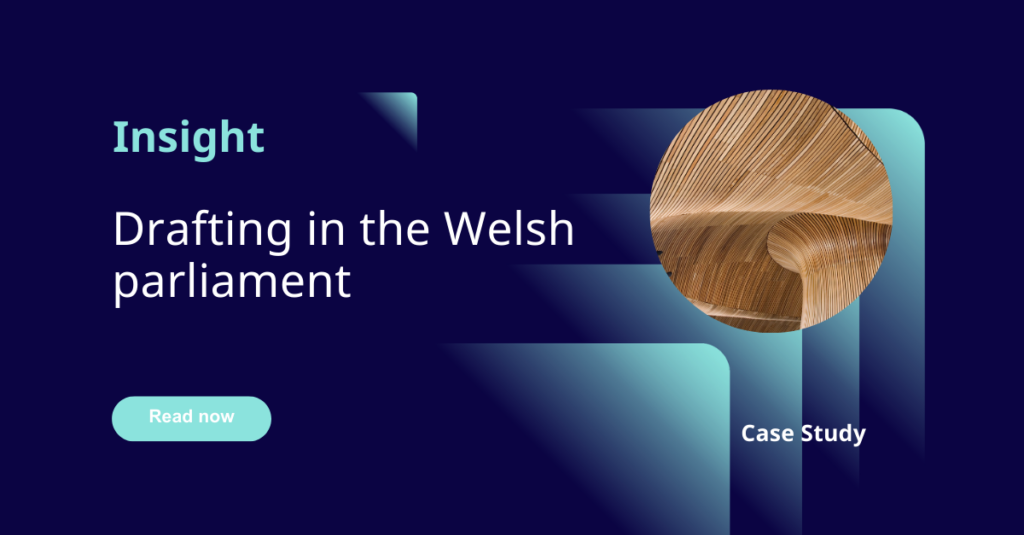- Siloed systems
- The need to move away from old mainframes
- Reliance on tools approaching end of life
- Layers of macros built up over time that have become difficult to manage
- Complex editing tools that require additional resources
- Ongoing reliance on paper in legislative processes
- Time-consuming, manual effort that takes drafting attorneys away from focusing on the quality of bill drafts.
- No way of joining up the dots on the real-time status of a bill
- Unnecessary extra steps
Not only can modernizing technology at the legislature help improve the working lives of staff, but effective solutions can also drive transparency with the public.
Co-developing future-focused solutions
Certainly, the process of modernization can be streamlined by a clear definition of scope and a deep understanding of the state’s as-is processes prior to beginning a change project. Establishing pre-determined goals provides clear visibility on the path forward and the outcomes.
Deep immersion in a state’s processes is essential, including dedicating time to map key concepts, workflows, data, and systems, and envisage where gaps and innovation approaches may lie. The end solution is thus built from the outset to meet the needs of those who utilize it each day.
The technological landscape is advancing such that states are looking at the wider implications of law produced in a digital-first environment. Paper and PDF are likely to remain in the picture for the foreseeable future, however, what role they will play is unclear. Once, the paper version could be referred to as the ‘master version’ but in a predominantly electronic environment, what is the ‘master version’? The Uniform Electronic Legal Material Act (UELMA) offers some routes forward. Developing a solution with deep auditability is essential.
Another important consideration is the acceleration of the move to the cloud. With staff across businesses now working from home, organizations globally are assessing the advantages of on-premises versus the cloud. Simultaneously, the cyber threat landscape is continuously evolving. Governments can be targeted by distributed denial-of-service (DDOS) attacks. Major companies are accumulating experience transitioning mission-critical systems for governments and institutions to the cloud. They are investing millions in ensuring compliance and have developed tools to catch DDOS attacks.
For legislatures, the cloud can unlock particular benefits, including:
- Optimal scaling for legislative performance
- Automatic updates to address vulnerabilities without disrupting the critical work of the legislature.
Whether your state looks at an on-premises install, a hybrid approach or cloud hosting, there are best practices to apply to customize the setup, provide support and prevent your state from running into legacy issues in the long run.
Deep immersion in a state’s processes is essential. The end solution is thus built from the outset to meet the needs of those who utilize it each day.
Meeting you where you are
Not only can modernizing technology at the legislature help improve the working lives of staff, but effective solutions can also drive transparency with the public. Joining up the dots on your data, establishing complete visibility on the status of a bill, provides opportunities to bring the legislature to more people.
At Propylon®, we utilize a methodology developed specifically for legislatures called OCDM, or Output Centric Design Methodology. OCDM underpins our partnership approach to developing solutions in tandem with legislatures, supporting all internal functions while facilitating the integration of emerging technologies where appropriate and necessary. The learnings we have accrued in our 20-plus years in the legislative space have fed the development of our LWB 360® platform. Talk to us about what we can do for your state.


